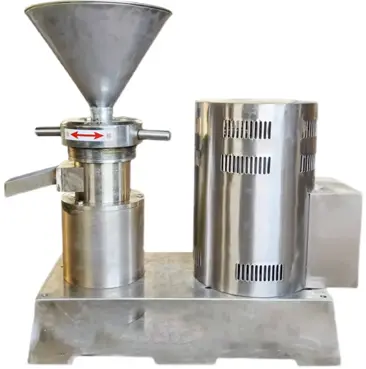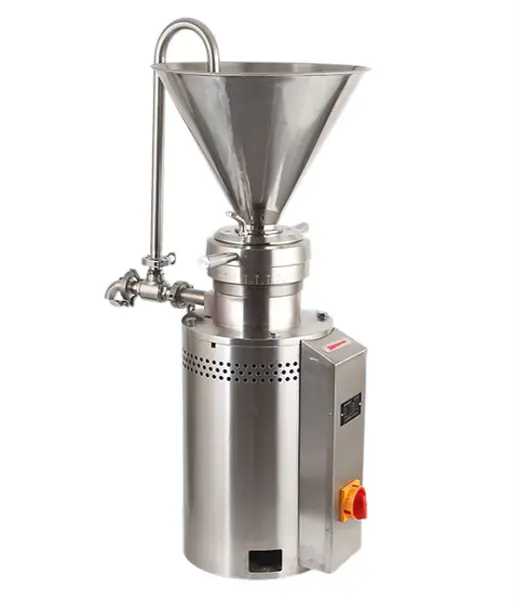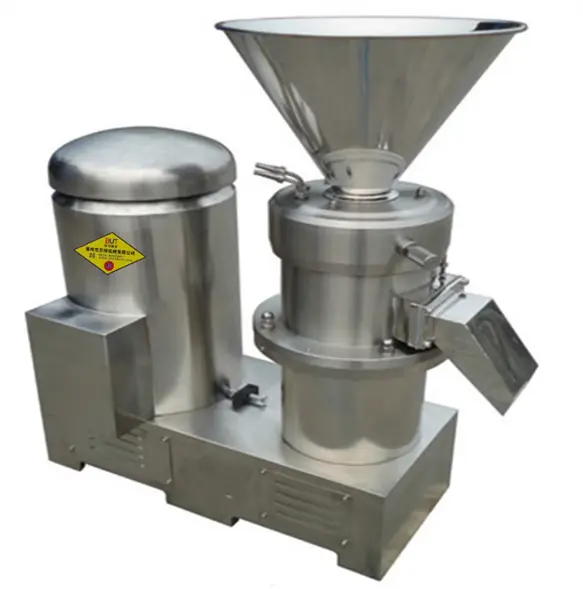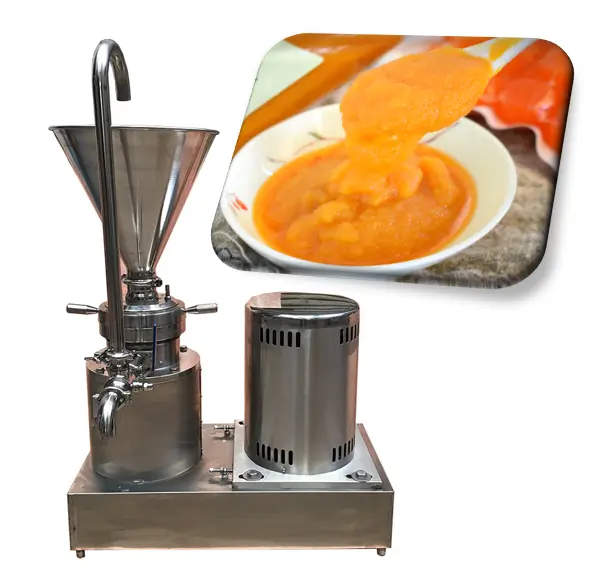colloid mill
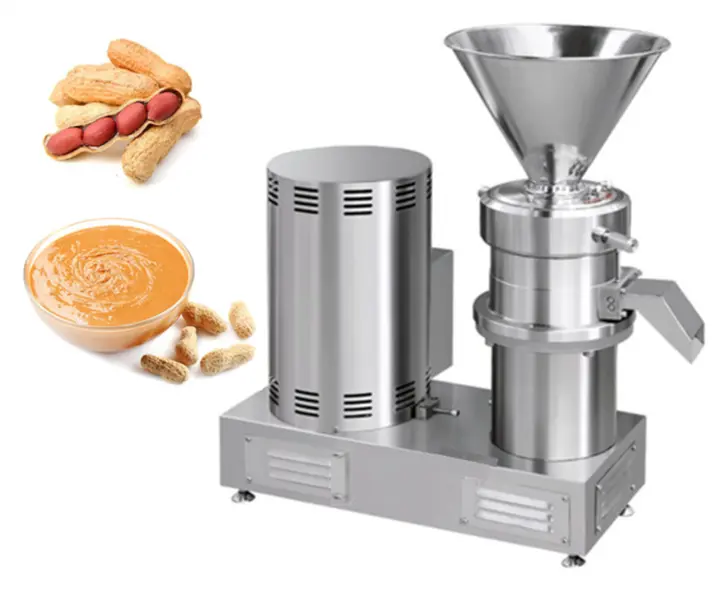
◆ What is colloid mil?
Colloid mill machine is a grinding equipment that can homogenize and ultrafinely pulverize liquid and semi-fluid materials. The colloid mill working uses physical effects such as shearing force, friction, high-frequency vibration, and high-speed vortex to effectively emulsify, disperse, homogenize, and pulverize the material to achieve ultra-fine crushing and emulsification of the material. The fineness can reach 2-40μm. The main advantages of colloid mill include: high efficiency, energy saving, simple operation, and wide application range, so it usually be used as industrial colloid mill machine and widely used in food, medicine, cosmetics, coatings and other industries.
◆ colloid mill uses
The colloid mill particle size reduction function makes colloid mills be particularly effective in reducing the size of solid particles and producing stable emulsions or suspensions. Colloid mills are used as colloid mill peanut butter, colloid mill mayonnaise etc. widely used in the production of mayonnaise, peanut butter, salad dressings, creams, ointments, and many other products that require fine particle size reduction and homogenization.
◆ colloid mill type
◆ colloid mill construction
A colloid mill is a type of machine used for the colloidization of solid particles or droplets in a liquid medium. The composition of colloid mill
typically includes the following colloid mill parts::
Rotor: The rotor is a high-speed spinning parts of colloidal mill, usually made of stainless steel. It contains a set of blades or pins, the rotor shaft is driven by an electric motor, which rotates at speeds of up to 3,000 RPM, create high shear forces and turbulence to disperse and mix particles or droplets.
Stator: The stator is a stationary colloid mill parts that surrounds the rotor. It has a conical shape with a small gap between the stator and rotor surfaces. The stator of the colloid mill grinder is designed to provide a high degree of turbulence to the fluid passing through the gap during colloid mill operation.
Shell: The shell of the colloid mill unit encloses the colloid mill rotor stator assembly. It is usually made of stainless steel which is corrosion resistance and durability , and is bolted securely to a base plate or stand to provides structural support for the colloid mill homogenizer..
Inlet and Outlet ports: The colloid milling machine has inlet and outlet ports to allow the introduction and removal of materials. The inlet port, often equipped with a hopper, is used to feed the material into the industrial colloid mill machine. The outlet port allows the processed material to exit the colloid mill machine.
Motor: The motor of the colloid mill machine is connected to the rotor shaft to power the rotor and provides the necessary power to colloid mill working. The colloid mill parts motor also features speed control mechanisms that enable the user to adjust the rotor speed according to their specific processing requirements.
Cooling System: Colloid mills generate a substantial amount of heat due to the high-speed friction and shear forces involved. Therefore, many colloidal mills have a built-in cooling system to dissipate the heat generated during colloidal mill working. This ensures the temperature of the processed material remains within the desired range and prevents overheating.
Overall, the construction of colloidal mill is relatively simple, the composition of colloid mill consists of the rotor, stator, shell, inlet and outlet ports, motor, and possibly a cooling system. Among these colloid mill spare parts], the colloid mill rotor stator are the key colloid mill parts. These colloid mill parts work in conjunction to provide efficient particle size reduction, mixing, and dispersion of materials in various industries. Kindly note, the precise colloid mill type design and colloid mill specifications can vary depending on the specific colloidal mill application and colloidal mill manufacturers.
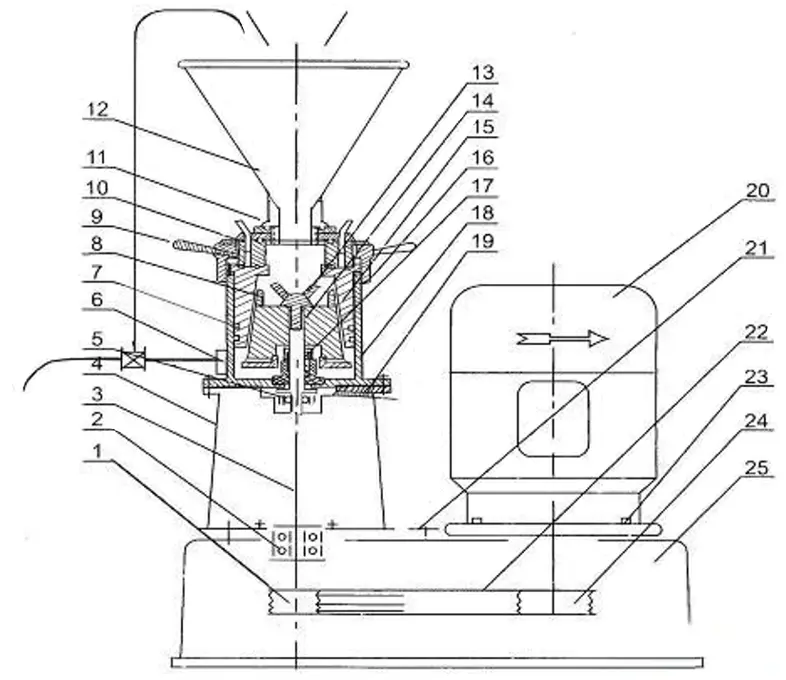
1. Main pulley
2. Bearings
3. Spindle
4. Base
5. Bearings
6. Outlet port
7. O-ring
9. Handle
10. Gland
12. Hopper
13. Rotary blade knife
14. Colloid mill rotor
15. Colloid mill stator
16. Adjustment dial
17. Seal components
18. Shell
19. Drainage hole
20. Motor
21. Adjustment screw
22. V-belt
23. Motor base
24. Slave pulley
25. Bottom base
◆ principle of colloid mill
During colloid mill working, the stator does not move and the rotor rotates at high speed, which generates strong friction and shearing force. When the material to be processed flows through the gap between the colloid mill rotor stator, it is subjected to shearing force. It is crushed, emulsified and homogenized under the action to obtain the required products. This also shows how colloid mill works. And we can see that the colloid mill machine working principle relies on the high-speed rotation of the rotor and the corresponding shear forces and turbulence produced by the interaction between the rotor and stator. This results in efficient particle size reduction, mixing, and dispersion of materials, making colloid mills suitable for various applications in industries such as food, pharmaceuticals, cosmetics, and chemical engineering. It's important to note that the colloid mill working is based on the principle of mechanical force and does not involve any chemical reactions.
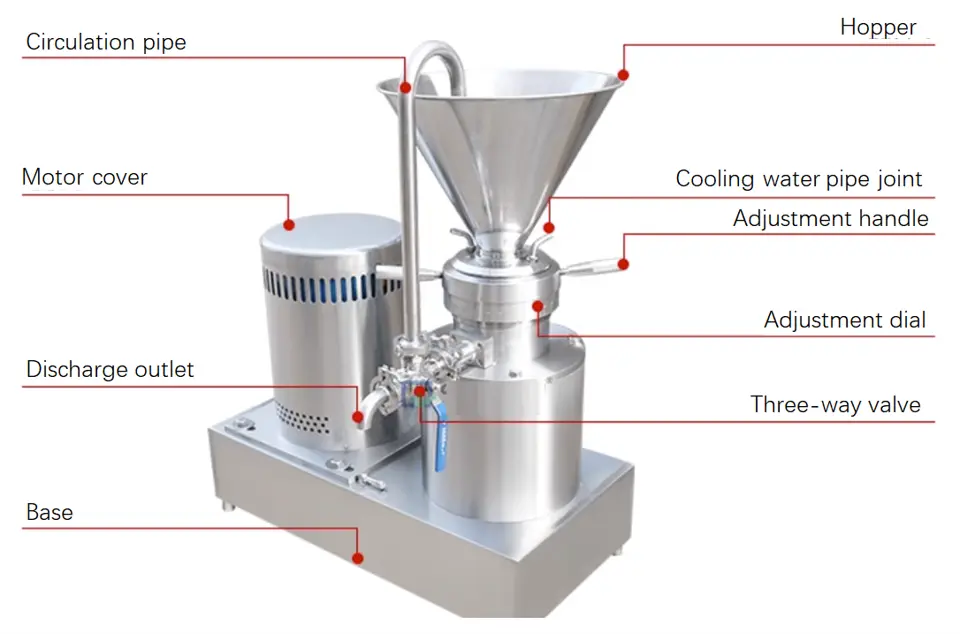
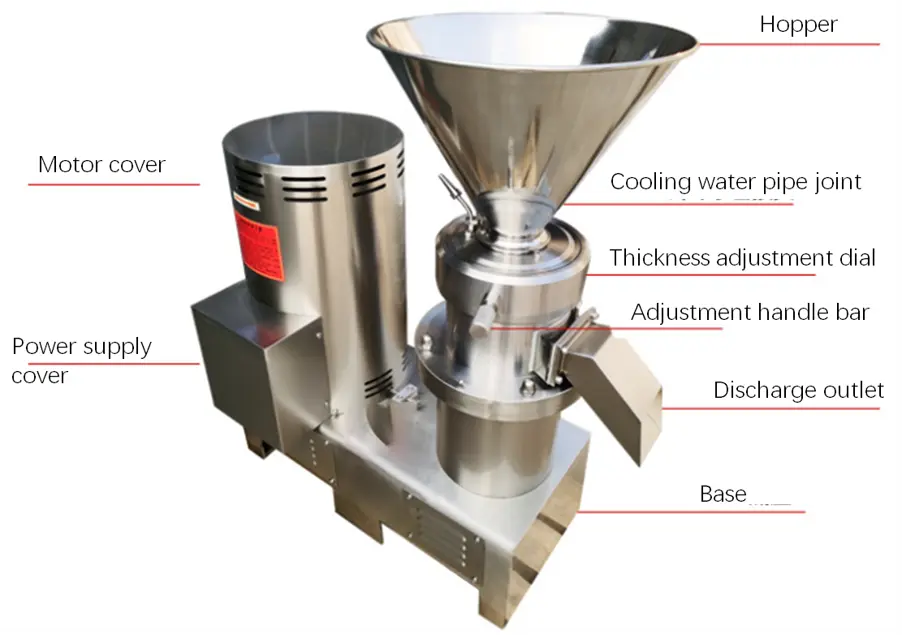
◆ application of colloidal mill
A colloid mill is primarily used for the process of colloidization, which involves the dispersion or emulsification of solid particles or droplets in a liquid medium. Colloid mills are often used as industrial colloid mill machine and are widely used in various industries such as food, medicine, and chemicals. Here are some specific colloidal mill applications:
● Food Industry: Colloid mills are extensively used in the food industry for the production of various products such as mayonnaise, salad dressings, sauces, nut pastes (e.g., peanut butter), and dairy products. They help achieve a smooth texture, uniform consistency, and stable emulsions.
● Pharmaceutical Industry: In the pharmaceutical sector, the role of colloid mill is crucial in the production of suspensions, ointments, creams, gels, and other pharmaceutical formulations. The colloid mill particle size reduction function makes the colloid mill pharmaceutical be great help to improving drug dispersion, and ensuring uniformity of the final product.
● Cosmetics Industry: In the cosmetics industry, colloidal mill is suitable for manufacturing of products like creams, lotions, emulsions, and cosmetic gels. Colloid mills help in blending and dispersing ingredients, achieving desired textures, and enhancing product stability.
● Chemical Industry: Colloid mills find application in the chemical industry for processes such as wet milling, grinding, and homogenization. The common application includes colloid mill for bitumen emulsion, colloidal suspension, colloid mill emulsion etc. The colloidal mill is suitable for manufacturing of pigments, paints, coatings, adhesives, lubricants, and various chemical suspensions or emulsions.
● Research and Development: Colloid mills are also used as laboratory colloid mill in laboratories and research facilities for experimental purposes, formulation development, and small-scale production of colloidal systems.
Overall, the colloid mill mixer is a versatile machine that enables the effective mixing, dispersing, and size reduction of particles or droplets, and the colloid mills usage is widespread across multiple industries.

 +86 19112905173
+86 19112905173 


